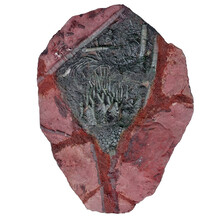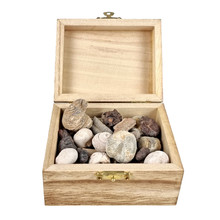Have you ever heard of sea lilies, or crinoid fossils? They are living fossils that have lived on our planet for about 500 million years. Read more.
Beautiful slide of a fossilised sea lily or "crinoid" from Morocco. The plate has been coloured to make the lily stand out beautifully.
Beautiful slide of a fossilised sea lily or "crinoid" from Morocco. The plate has been coloured to make the lily stand out beautifully.
Beautiful slide of a fossilised sea lily or "crinoid" from Morocco. The plate has been coloured to make the lily stand out beautifully.
Beautiful slide of a fossilised sea lily or "crinoid" from Morocco. The plate has been coloured to make the lily stand out beautifully.
Beautiful slide of a fossilised sea lily or "crinoid" from Morocco. The plate has been coloured to make the lily stand out beautifully.
Beautiful slide of a fossilised sea lily or "crinoid" from Morocco. The plate has been coloured to make the lily stand out beautifully.
Beautiful slide of a fossilised sea lily or "crinoid" from Morocco. The plate has been coloured to make the lily stand out beautifully.
Wooden treasure box with various fossils from Morocco, Brachiopods (shells), Gastropods (snail shells), black ammonite fragments, sea urchin, Orthoceras and Crinoid.
What are sea lilies?
Sail lilies belong to the Crinoidea and are spiny-skinned marine animals. Although their name suggests a plant, sea lilies are indeed animals. They live at the bottom of the ocean, where they feed on small particles that flow by. They can be found in both shallow and deep waters, and are best known for their beautiful, delicate appearance.
Living fossils
Sea lilies are considered living fossils because they have lived on Earth for about 500 million years. So they have experienced countless changes on our planet and are still here! This makes them a fascinating subject not only for scientists, but also for fossil lovers!
Crinoid prints from Morocco
Did you know that beautiful crinoid prints can be found in Morocco? In the form of fossilised plates, it is a great way to admire the beauty of these fossils and bring a piece of their history into your home. They are relatively large and show the sea lions in all their detail, giving you a good idea of what these extraordinary animals looked like.
The mysterious fallen star stones
In addition to crinoid prints from Morocco, there are also fallen star stones from Utah, USA. These stones are tumbled and show star prints. They are considered a special find and are highly sought after by fossil and mineral collectors. The fallen star stones are a great addition to your collection and tangible evidence of the long history of sea lilies on our planet.
Conclusion
If you are interested in natural history and the wonders of our planet, sea lilies are a fascinating subject to delve into. These living fossils have been through so much and can still be found in our oceans. Whether you choose a beautiful crinoid print from Morocco or a mysterious fallen star stone from Utah, you will bring a piece of this special history into your home. Be inspired by the beauty and perseverance of these unique creatures and dive into the world of sea lilies and crinoid fossils!








